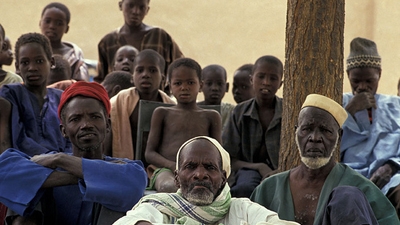Much has been said about income and opportunity gaps in recent years. Whether present in a rising or struggling economy, inequality is an issue that rankles and engages citizens on all continents. So what is the global picture on inequality?
Sanjeev Gupta, deputy director of the International Monetary Fund’s Fiscal Affairs Department, and David Coady, deputy chief of the department’s Expenditure Policy Division, decided to get to the bottom of the story. They shared their findings in the latest issue of the World Bank’s Inequality in Focus, a quarterly newsletter monitoring global inequality trends.
You recently assembled a database showing trends in disposable income inequality in 150 countries during the period 1990 - 2005. What benefits does the database bring and what has it revealed?
Coady: We pulled together data very carefully from a number of sources, looking at the “Gini coefficient” in 22 advanced and 128 developing countries. [The Gini is a measurement of inequality on a scale from 0 to 1, where higher inequality results in a higher number.] What we found was a trend upwards in inequality of disposable income, very much so in advanced – but also in developing countries.
You call the enormous difference in inequality between advanced and developing nations “striking.” Why are the gaps in disposable income much smaller in countries such as Canada, Switzerland, France and Finland than in Latin America and Sub-Saharan Africa?
Gupta: The Gini coefficient for advanced countries is nearly half of what you find in many developing countries. We have to attribute the lower inequality rates in advanced countries in large part to the effectiveness of fiscal policies. It appears very clearly in the numbers we call “Ginis before taxes and transfers” and “Ginis after taxes and transfers.”
These data show that governments in advanced countries are good at taxing certain classes of populations and then transferring the money, through various social programs, to people who are relatively worse off. These taxes and transfers reduce inequality by 17 percentage points, on average. For the most part, these kinds of fiscal instruments don’t usually exist in developing countries.
Coady: The average tax ratios for advanced economies exceed 30 percent of the Gross Domestic Product, while ratios in developing countries – if we exclude emerging East European economies – generally fall between 15 percent and 20 percent of GDP. As a result, social spending is also substantially lower in developing economies; and especially so in Asia, the Pacific and Sub-Saharan Africa.
What are the barriers to implementing fiscal reforms that increase social spending in developing countries?
Gupta: Resources are limited in these countries and they have often not been able to allocate them in the best possible way. A huge number of countries, for example, are giving generalized subsidies on petroleum products. That takes away the government’s ability to provide more targeted and productive support for the population.
Coady: A large informal sector also plays a part. Many developing countries have huge populations working in the agricultural sector, which means they are often not part of the state’s taxation or benefits programs. In Latin America, for example, there are pensions, but only for people working in the public sector and large private firms. A big equalizing factor in advanced countries is the broad coverage of pension programs.
As you show in your article, fiscal policies are not the only magic bullet. What happened in Africa?
Gupta: The case of Africa is interesting. This development is very recent and it’s probably a reflection of the relatively high growth rates that Sub-Saharan Africa has seen since 2004. It seems that those high growth rates have benefited people across different income classes, and more so at the lower and middle-income levels than the upper levels.
Coady: Africa is the only region where the Gini has decreased continuously since 1990. In fact, inequality decreased by more than 5 percentage points in nearly half of the 26 Sub-Saharan countries with available data. We cannot attribute this development to fiscal policies, but rather to things such as improved wage and employment prospects for low and middle-income households.
So the growth has not only been strong, but it has also been inclusive.

